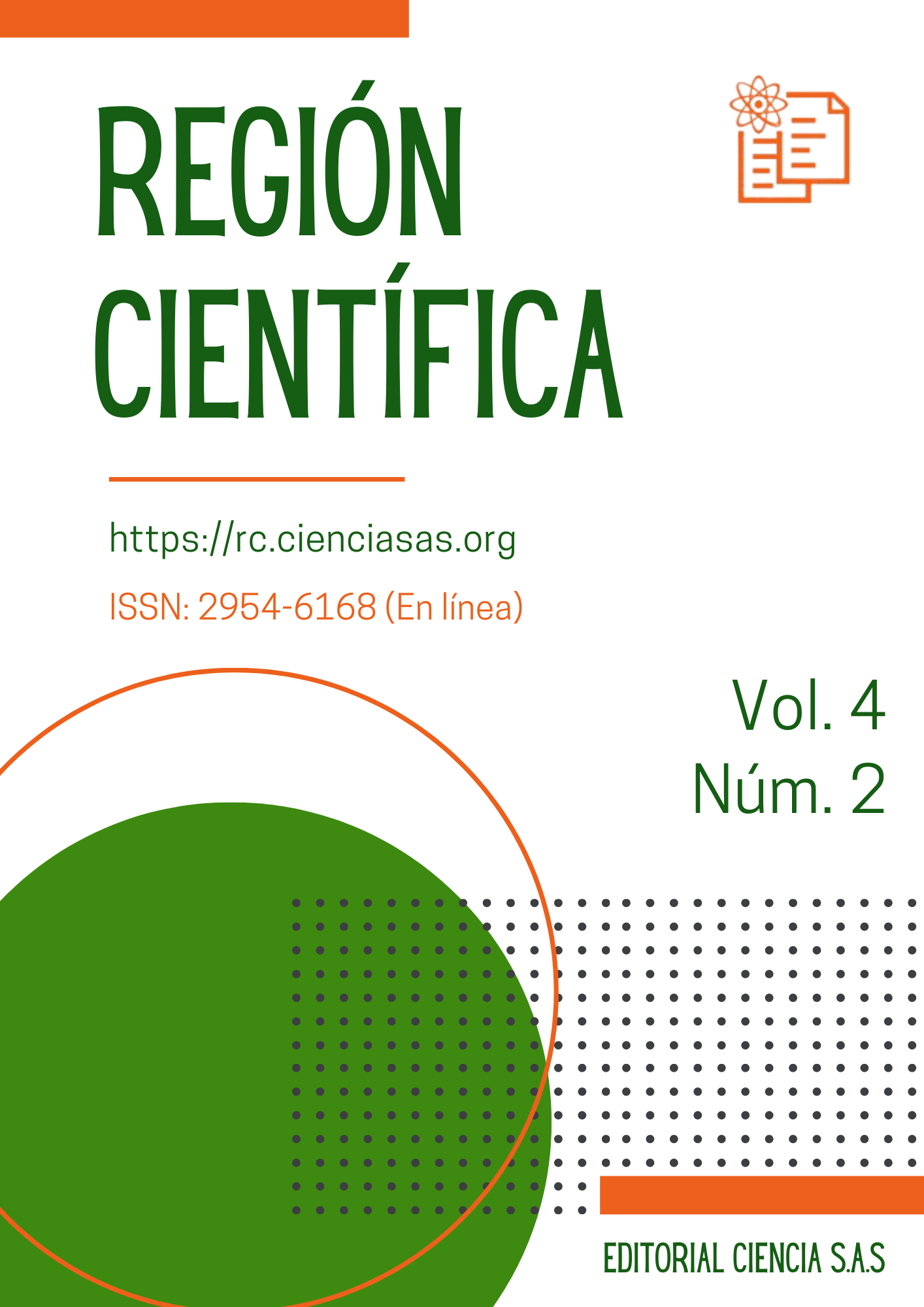Kosher certification in the Colombian aquaculture industry: Case of rainbow trout (Onchorhynchus mykiss)
DOI:
https://doi.org/10.58763/rc2025505Keywords:
Consumer, financial markets, food, foreign tradeAbstract
Introduction: In Colombia, the fish farming industry has recently achieved a more stable position in international markets, generating greater productivity at the local level in terms of business size and considering aspects such as the strengthening of the production chain, the adoption of technology, and compliance with health, safety, and quality standards. Under these assumptions, quality certifications are essential for gaining access to new international markets. Methodology: The objective of the study was to identify the trout production environment in relation to the implementation of certification and its implications for the market. To carry out this work, a literature search was conducted on kosher certification in food products from the fish farming sector, and organizations responsible for granting certification were then contacted. Results: Kosher quality certification, which is of religious origin, has become important for different types of consumers who want to eat nutritious and healthy foods due to market factors. In addition, an overview was established of the administrative requirements that a company in the country must meet in order to obtain this validation. Conclusions: Finally, some aspects of the market that must be considered for certification to be economically viable are analyzed.
Metrics
References
Acuicultores. (2024). Federación Colombiana de Acuicultores. 1(19). https://fedeacua.org/files/acuicultores_19_baja1.pdf
Ahmed Osman, O. (2023). Kosher and Halal Food Dissimilarities and Challenges in Accessing International Markets. En Halal and Kosher Food (pp. 55–65). Springer International Publishing. https://doi.org/10.1007/978-3-031-41459-6_5
Ahmed Osman, O., & Moneim Elhadi Sulieman, A. (2023). Halal and Kosher Food: Integration of Quality and Safety for Global Market Trends. Springer International Publishing. https://doi.org/10.1007/978-3-031-41459-6
BAP. (2022a). BAP Certified Aquaculture Producers. Logo requirements. https://www.bapcertification.org/Standards
BAP. (2022b). BAP Certified Aquaculture Producers. BAP Certified Aquaculture Producers. https://www.bapcertification.org/Producers
Beleño, I. (2017). La trucha, el oro azul de la agroindustria colombiana. Agronegocios. https://www.agronegocios.co/ganaderia/la-trucha-el-oro-azul-de-la-agroindustria-colombiana-2623114#
Berry, D. (2017). The trends fueling kosher certification. Food Business News. https://www.foodbusinessnews.net/articles/9015-the-trends-fueling-kosher-certification
Blech, Z. Y. (2009). Kosher Food Production (1a ed.). Wiley. https://doi.org/10.1002/9780813804750
Cobo Barrios, A., & Díaz Manzano, A. (2020). Sello Kosher: Motivaciones empresariales para su desarrollo en Colombia. https://repository.universidadean.edu.co/entities/publication/c01f2532-517c-4af1-b5c0-252da911d4a8
De Devitiis, B., Carlucci, D., Nocella, G., Viscecchia, R., Bimbo, F., y Nardone, G. (2018). Insights for the Development of a Functional Fish Product: Drivers and Barriers, Acceptance, and Communication of Health Benefits. Journal of Aquatic Food Product Technology,27(4): 430-445. https://doi.org/10.1080/10498850.2018.1447059
Deuraseh, N. (2022). Food safety aspects of cell-based food. World Health Organization. https://www.researchgate.net/profile/Nurdeng-Deuraseh/publication/356628121_The_Ideas_of_Halal_Contemporary_Products/links/62425a825e2f8c7a03466bb3/The-Ideas-of-Halal-Contemporary-Products.pdf
Dey, M. M., Rahman, Md. S., Dewan, Md. F., Sudhakaran, P. O., Deb, U., & Khan, Md. A. (2024). Consumers’ willingness to pay for safer fish: Evidence from experimental auctions in Bangladesh. Aquaculture Economics & Management, 28(3), 460–490. https://doi.org/10.1080/13657305.2024.2353212
FAO. (2020). El estado mundial de la pesca y la acuicultura 2020. La sostenibilidad en acción. https://doi.org/https://doi.org/10.4060/ca9229es
FAO. (2024a). El estado mundial de la pesca y la acuicultura 2024. La transformación azul en acción. JE In El estado mundial de la pesca y la acuicultura 2024. FAO. https://doi.org/10.4060/cd0683es
FAO. (2024b). AGROVOC Multilingual thesaurus. https://agrovoc.fao.org/browse/agrovoc/en/
Fauzi, M. A., Mohd Ali, N. S., Mat Russ, N., Mohamad, F., Battour, M., & Mohd Zaki, N. N. (2024). Halal certification in food products: Science mapping of present and future trends. Journal of Islamic Marketing, 15(12), 3564–3580. https://doi.org/10.1108/jima-12-2023-0407
FEDEACUA. (2015). Plan de negocios sectorial de la piscicultura en Colombia. https://fedeacua.org/files/plannegociopiscicola2015_1.pdf
FEDEACUA. (2021). Fedeacua. Sello de calidad. https://fedeacua.org/page/sellocalidad
FEDEACUA. (2024). Boletín anual de exportaciones e importaciones diciembre de 2024. Federación Colombiana de Acuicultores.
Gross, W. (2025). How the Holy Books became Holy: Their Origin and Function. En W. Gross, Don’t Believe, What You Think (pp. 93–101). Springer Berlin Heidelberg. https://doi.org/10.1007/978-3-662-70878-1_7
Hammarlund, C., Svensson, K., Asche, F., Bronnmann, J., Osmundsen, T., & Nielsen, R. (2025). Eco-Certification in Aquaculture – Economic Incentives and Effects. Reviews in Fisheries Science & Aquaculture, 33(3), 402–415. https://doi.org/10.1080/23308249.2024.2440712
Hayat, N., Mustafa, G., Naeem, M., Alotaibi, B. A., & Traore, A. (2025). Assessing the impact of environmental, occupational health and safety, and food safety management systems on the sustainable performance of food processing companies. Frontiers in Sustainable Food Systems, 9, 1491456. https://doi.org/10.3389/fsufs.2025.1491456
Hossain, M. A. M., Uddin, S. M. K., Sultana, S., Wahab, Y. A., Sagadevan, S., Johan, M. R., & Ali, Md. E. (2022). Authentication of Halal and Kosher meat and meat products: Analytical approaches, current progresses and future prospects. Critical Reviews in Food Science and Nutrition, 62(2), 285–310. https://doi.org/10.1080/10408398.2020.1814691
ICA. (2016). Resolución 20186 de 2016. Por medio de la cual se establecen las condiciones sanitarias y de bioseguridad en la producción primaria de animales acuáticos, para obtener el certificado como establecimiento de acuicultura bioseguro. https://www.ica.gov.co/getattachment/b62ccb80-5075-4f3a-b4f3-4ae983949c17/2016R20186.aspx
Kadam, A., & Deshmukh, R. (2020, febrero). Kosher Food Market by Product Type (Culinary Products, Snacks & Savory, Bakery & Confectionery Products, Meat, and Others), and Distribution Channel (Supermarkets & Hypermarket, Grocery Stores, and Online Stores): Global Opportunity Analysis and Industry Forecast 2019–2026. https://www.alliedmarketresearch.com/Kosher-food-market-A06022
Karim, M. F., & Almira, J. (2023). NGO and Global Voluntary Standards in Sustainable Seafood: The Case of Aquaculture Stewardship Council (ASC) in Indonesia. The Journal of Environment & Development, 32(2), 165–191. https://doi.org/10.1177/10704965231158568
Kruk, S. R. L., Toonen, H. M., & Bush, S. R. (2024). Digital sustainability assurance governing global value chains: The case of aquaculture. Regulation & Governance, 18(4), 1153–1170. https://doi.org/10.1111/rego.12571
Lever, J., Vandeventer, J. S., & Miele, M. (2023). The ontological politics of kosher food: Between strict orthodoxy and global markets. Environment and Planning A: Economy and Space, 55(2), 255–273. https://doi.org/10.1177/0308518X221127025
Lytton, T. D. (2023). Private third-party verification of product claims: Lessons from kosher certification. En Research Handbook on International Food Law (pp. 387–408). Edward Elgar Publishing. https://doi.org/10.4337/9781800374676.00033
MADR. Ministerio de Agricultura y Desarrollo Rural (2021a). Exportaciones piscícolas totalizaron 12.898 toneladas y sumaron US$70,1 millones. https://www.minagricultura.gov.co/noticias/Paginas/Exportaciones-pisc%C3%ADcolas-totalizaron-12-898-toneladas-y-sumaron-US$70,1-millones-.aspx/#:~:text=Bogot%C3%A1%2C%2019%20de%20febrero%20de,sumar%20US%2470%2C1%20millones
MADR. Ministerio de Agricultura y Desarrollo Rural. (2021b). Acuicultura en Colombia. Cadena de la acuicultura. https://sioc.minagricultura.gov.co/Acuicultura/Documentos/2021-06-30%20Cifras%20Sectoriales.pdf
MADR. Ministerio de agricultura y desarrollo rural. (2024). Dirección de Cadenas Pecuarias, Pesqueras y Acuícolas. https://www.minagricultura.gov.co/ministerio/direcciones/Paginas/Direccion-de-Cadenas-Pecuarias.aspx
Ministerio de Agricultura y Desarrollo Rural. (2021). Cifras sectoriales de la acuicultura en Colombia . SIOC - Sistema de Información para la Acuicultura Colombiana. https://sioc.minagricultura.gov.co/Acuicultura/Documentos/2019-06-30%20Cifras%20Sectoriales.pdf
Mohd Shuhaimi, A. A., Ab Karim, M. S., Mohamad, S. F., Ungku Zainal Abidin, U. F., & Arsyad, M. M. (2022). A Review on Halal and Kosher Regulations, Certifications, and Industrial Practices. International Journal of Academic Research in Business and Social Sciences, 12(2). https://doi.org/10.6007/ijarbss/v12-i2/12175
Monteblanco, S. (2017). Certificación Kosher y Halal: Considerando el mercado Kosher y halal en el Perú. https://repositorio.promperu.gob.pe/items/ffcd086f-b288-41bd-95ab-bdf104f3afcc
Morán Rosero, A. Y. (2019). Estudio de factibilidad para la comercialización en los mercados internacionales de trucha congelada de la Asociación acuícola “Integración Santa Rosa” de la comunidad Santa Rosa- Sucumbíos. https://repositorio.upec.edu.ec/items/84c849bd-da6e-48da-a0d2-cddbf113eb63/full
Nam, J. J. (2023). Four distinctive Christian denominations. En World Religions for Healthcare Professionals (pp. 174–190). Routledge. https://doi.org/10.4324/9781003288862-13
OEC. (2022). Observatorio de complejidad económica. Pescado trucha y filete. https://oec.world/es/profile/hs/fish-frozen-trout-salmo-trutta-oncorhynchus-mykiss-oncorhynchus-clarki-oncorhynchus-aguabonita-oncorhynchus-gilae-oncorhynchus-apache-and-oncorhynchus-chrysogaster-excluding-fillets-livers-roes-and-other-fish-meat-of-heading-0304
Ortega-Salas, A. L. (2016). Red empresarial como estrategia asociativa organizacional para producción y comercialización de trucha en el municipio de Pasto, Nariño Colombia. Orinoquia, 20(2), 60-70. https://www.redalyc.org/articulo.oa?id=89659214007
OU Kosher Staff. (2007). The Power of Pareve. OU Kosher. https://ouKosher.org/blog/industrial-Kosher/the-power-of-Pareve/
Rector, M. E., Filgueira, R., Bailey, M., Walker, T. R., & Grant, J. (2023). Sustainability outcomes of aquaculture eco‐certification: Challenges and opportunities. Reviews in Aquaculture, 15(2), 840–852. https://doi.org/10.1111/raq.12763
Regenstein, J. M., & Marinova, D. (2024). The Impact of Kosher and Halal on Consumers. En D. Bogueva (Ed.), Consumer Perceptions and Food (pp. 45–65). Springer Nature Singapore. https://doi.org/10.1007/978-981-97-7870-6_3
Rodríguez Rodríguez, A., & Mora Sarmiento, H. L. (2017). Plan de Marketing internacional para exportar filete de trucha arco iris a Canadá. http://polux.unipiloto.edu.co:8080/00003961.pdf
Sánchez-Alzate, J. A., Viana-Rua, N. E., Pino-Martínez, A. A., & Gómez-Navarro, R. M. (2020). Vigencia de los conceptos, métodos, herramientas y matrices de la planeación estratégica: una revisión bibliográfica. Revista Modum, 2, 189-204. https://revistas.sena.edu.co/index.php/Re_Mo/article/view/3030
Star-K. (2018). THE GLOBAL DEMAND FOR KOSHER. https://www.star-k.org/articles/articles/getting-certified/advantage-Kosher-certification/1373/the-global-demand-for-Kosher/
Star-k. (2022). STAR-K Anisakis Fish Policy. STAR-K Kosher Certification https://www.star-k.org/articles/wp-content/uploads/RST.FISH_POLICY_ANISAKIS_AUG19_2022.pdf
Verboonen, E. (2013). Modelo para la evaluación económica de la producción orgánica de trucha (Oncorhynchus mykiss) en Michoacán. http://bibliotecavirtual.dgb.umich.mx:8083/xmlui/handle/DGB_UMICH/1870
Worldwide Kosher Certification. (2017, junio). KOSHER CERTIFICATION GROWTH AROUND THE WORLD. https://www.klbdKosher.org/news-and-articles/Kosher-certification-growth-around-the-world/
Zanatta, J. A. A. C., Fidelis, R., & Sakanaka, L. S. (2023). Method for selecting certification standards for food safety. Food Security, 15(4), 1071–1085. https://doi.org/10.1007/s12571-023-01370-8
Downloads
Published
How to Cite
Issue
Section
License
Copyright (c) 2025 Liliana Patricia Mancera Rodríguez, Raul Fernando Gordillo López, Nicolas Albarracín Bohórquez, Andrea Carolina Piza Jerez

This work is licensed under a Creative Commons Attribution-NonCommercial-ShareAlike 4.0 International License.
Este artículo se distribuye bajo la licencia Creative CommonsReconocimiento-NoComercial-CompartirIgual 4.0 Internacional. A menos que se indique lo contrario, el material publicado asociado se distribuye bajo la misma licencia.












